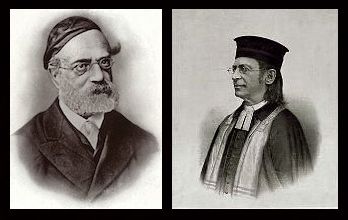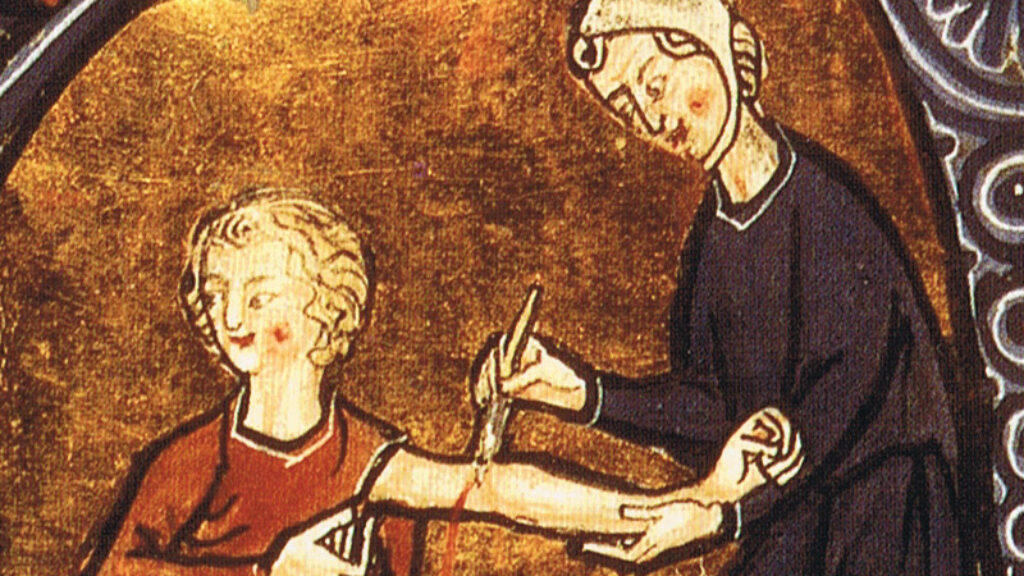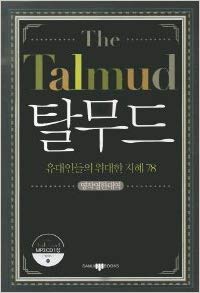Korean Talmud, Is Modern Orthodoxy like Classical Reform? and Jesus and the Baal Shem Tov
Although scholarly articles can be dense and difficult to access, they are often fascinating. Here’s a quick round-up of three interesting essays from leading journals: Modern Judaism, Jewish Social Studies, and Contemporary Jewry.
Jewish Seoul
As has been widely reported, a work called “The Talmud” is now immensely popular in South Korea, found in nearly every bookshop as well as in vending machines and convenience stores. Korean children study this work—there is even a prenatal version for expectant parents—to learn the wisdom of the Jews. This, despite the fact that only about one hundred Jews live in South Korea, making up just 0.0002 percent of the population.
Academics have remained largely silent on Korean fascination with “The Talmud,” but in the most recent issue of Modern Judaism, Christopher L. Schilling, writing on the ground from Seoul National University, weighs in with an article titled “Jewish Seoul: An Analysis of Philo- and Antisemitism in South Korea.”
In a 2015 New Yorker article that explored Korea’s Talmud obsession in some depth, readers learned the peculiar history of Rabbi Marvin Tokayer, the author of the Korean Talmud, who dictated the entire book in the 1970s over just a few days to a Japanese translator (the original was in Japanese; it later spread to Korea). It’s only about 40 pages long—significantly shorter than the 63 tractates that amount to more than 6,200 pages in the original—and most of those pages have large pictures and slight text. It contains a pastiche of parables, aphorisms, and even contemporary Jewish jokes and reads as a collection of generalized Jewish wisdom on everything from sex to money.
But if what the Koreans seek is wisdom, why not look to other, more globally recognized sources, like Confucius? The answer, as given by more than one Korean Talmud enthusiast (including the ambassador to Israel): Jews punch above their weight globally and have won many Nobel Prizes—and Koreans are looking in “The Talmud” for the key to that success. It’s the kind of admiration that can feel both flattering and uncomfortable, hence Schilling’s question: Is this philo-Semitism or its opposite?
A 2014 survey conducted by the Anti-Defamation League found that more than half of South Koreans held anti-Semitic views, agreeing with statements like “Jews have too much power in business” or “too much control over the global media” or “global affairs.” But Dave Hazzan, writing for Tablet magazine, questioned the survey’s methodology and findings, arguing ultimately that the Koreans love the Jews.
Schilling notes that there are intriguing parallels between South Korea and Israel: Both were founded in 1948, both became high-tech “start-up nations” lacking natural resources but boasting a highly educated population, both have strong relationships with the United States, and both have unfriendly, undemocratic neighbors.
But the experiences of both nations are not identical. Despite the economic growth of the past decades, South Korea is the unhappiest country in Asia, with a dramatically high suicide rate. The pressure to succeed in a “rapid knowledge economy” explains the South Korean emphasis on education and its unfortunately often-abusive educational system. The strong interest in Jewish education, and in the Talmud, boils down to a determination to get ahead—like the Jews.
What appears then as a kind of philo-Semitism, Schilling argues, is much closer to anti-Semitism, treating “the Jews” as an abstract representation rather than as a people. Talmud-mania derives not from an interest in Judaism writ large but as a coping tool for the intolerable demands of globalization. This is why Koreans have no interest in Jewish holidays, history, or even cookery.
The New Orthodox Rabbi
The Orthodox Union’s February 1, 2017, ruling prohibiting women from serving as clergy—a response to the small number of Orthodox female clergy recently ordained by Yeshivat Maharat and other “open” Orthodox groups—was not particularly shocking. Similar statements had been issued in 2010, 2013, and 2015. But as Bar-Ilan University’s Adam S. Ferziger argues in “Sanctuary for the Specialist: Gender and the Reconceptualization of the American Orthodox Rabbinate” (Jewish Social Studies), the ruling does more than reiterate past statements on the subject; it takes deliberate steps to define the role of the “Orthodox rabbi.” The definition that emerges resembles an unlikely forebear: the ideal Reform rabbi of the 19th century.
The emergence of Orthodox female clergy began in the 1970s, with a dramatic expansion of women’s religious education. For the first time, a significant number of Orthodox women were learning Talmud and halakha in similar educational frameworks as men and trying new and varied forms of ritual involvement. By the late 20th century, a woman could train to be a yo’etzet halakha, an advisor to women on questions of ritual purity and Jewish law. The titles of rabba (the female equivalent of “rabbi”) and maharat (an acronym—manhiga hilkhatit ruchanit toranit—meaning “legal, spiritual, and religious leader”) followed soon after. The number of Orthodox synagogues hiring women to serve alongside male rabbis increased quickly. Although these women were generally not called “rabbis,” they were hired to take on communal and pastoral tasks previously performed by rabbis.
Responding to these trends, the 2017 Orthodox Union ruling argues largely from mesora (tradition) to prohibit women from the Orthodox clergy and defines that role very specifically within the synagogue. Women may not perform such rabbinic functions as leading prayers and reading Torah for the congregation. But the prohibition also extends to activities that have no technical legal impediments, such as baby-naming and delivering sermons from the pulpit (though, the authors of the ruling grant, women may give identical lectures in nonsynagogue settings).
Ferziger argues that by centering the Orthodox rabbi in the synagogue, the 2017 statement is part of a “trend toward specialization” that began with 19th-century German Jewry. While classically rabbis were legal experts whose role was centered in the study house and not the synagogue (where others, perhaps a hazzan or shaliach tzibbur, prayer leader, or maggid or darshan, sermon-giver, were more likely to hold leadership roles), early Reform and Reform-leaning rabbis increasingly saw their roles as synagogue-centric:
The gradual political emancipation of the Jews in many German-speaking precincts of central Europe precipitated a sharp decline in the coercive power held by local Jewish communities to govern internal Jewish affairs and to enforce religious obedience. In due course, the rabbis lost much of their formal legal authority, and the urbanizing Jewish public became increasingly alienated from the old-style rav whose main qualification was talmudic expertise. In response, a new cadre of Jewish clergy emerged that focused on making Judaism relevant to those whose daily regimen did not necessarily include religious involvement. This demanded acquiring new types of knowledge, developing fresh skill sets, and redefining the main venue for their activities. Under these circumstances, the synagogue sanctuary was transformed into the dominant axis of rabbinic function.

As the historian Michael Meyer has pointed out, it is for this reason that 19th-century Reform rabbis are usually portrayed in synagogue attire (wearing a tallit, for instance), while their Orthodox counterparts are portrayed in everyday clothing.
Ferziger takes this thought one step further, arguing that the current environment of Modern Orthodox Judaism and the discussions that swirl around the issue of female religious leadership are reminiscent of 20th-century discussions in the Reform and Conservative movements that led to the ordination of women (in 1972 and 1983, respectively).
Despite the Orthodox Union’s ruling, will Modern Orthodoxy eventually go the same way? We’ll have to wait and see.
Jesus and the Baal Shem Tov
Many scholars have noted striking parallels between Jesus (1st-century Palestine, founder of Christianity) and the Baal Shem Tov (18th-century Poland, founder of Hasidism) over the years, though they are separated by time, space, and message. In “Jesus and the Baal Shem Tov: Similar Roles but Different Outcomes,” (Contemporary Jewry), Robert Cherry, a professor of economics at Brooklyn College, takes this provocative comparison and runs with it.
First-century Palestine, under the thumb of the Roman Empire, was a difficult place to live. Punishing tax structures caused poor farming families to fall deeply into debt, oftentimes losing their homes and any hope of livelihood. As the gap between economic classes widened, many desperate souls turned to asceticism and millennialism offered by groups like the Qumran community (the custodians of the famous Dead Sea Scrolls) and itinerant preachers like John the Baptist. Jesus, who Cherry speculates may have witnessed these inequities first-hand as a carpenter working on urban construction projects in Sepphoris and Tiberias, began his ministry as a disciple of John and was himself inclined toward asceticism. The Gospels recount that after being baptized by John, he began his ministry by fasting in the wilderness for 40 days (Mark 1:12–13, Luke 4:1–13, Matthew 4:1–11). Ultimately, though, Jesus adopted what New Testament scholar Stephen Patterson calls “natural asceticism”—a simplified, no-frills lifestyle, but not one of extreme privation. In the wake of his death, Jesus’s most influential early follower, Paul, strongly embraced asceticism. This put him in conflict with the other disciples, who did not encourage their followers to take up ascetic lifestyles, though church leaders often did themselves.
Like 1st-century Palestine, 18th-century Poland was plagued by social unrest and economic hardship. Jews also suffered under violent pogroms. In this milieu, Cherry notes, Lurianic Kabbalah furnished a set of ascetic practices that complemented a pessimistic world view, rejecting pleasure in this life in order to attain perfection in the next. In much the same way that Jesus began as a follower of John the Baptist’s asceticism, the Baal Shem Tov was initially an adherent to kabbalistic asceticism. And just as Jesus came to reject the extreme asceticism of John the Baptist, the Baal Shem Tov found a new way of thinking about God—one that brought God to the common Jew and understood the whole, present world to be imbued with God’s glory, thus obviating the rejection of material pleasure. The Baal Shem Tov’s foremost disciple, however, Dov Ber (the Maggid of Mezheritch), like Jesus’s follower Paul, was firmly wedded to ascetic practices. And as it had for Paul, this uncompromising asceticism put the Maggid in conflict with other disciples of the Baal Shem Tov, many of whom did not accept the Maggid as his successor.
Ultimately in these two movements—early Christianity and Hasidism—the ascetic impulse shook out differently. For Christians, it took deep root. For Jews, it did not. Jewish asceticism turned out, in antiquity and early modernity, to be temporary, a means of grieving in response to disaster. And—here Cherry concludes on a somewhat unexpected note—this is the reason why 19th– and 20th-century Jewish immigrants (but not Irish Catholic immigrants) were comfortable with the bawdy and decidedly unascetic practice of performing vaudeville.
Suggested Reading
Old-New Sabbath
Does everyone need a Sabbath? Judith Shulevitz thinks so.
Apples, Honey, and Articles
A compilation of 10 favorites from the JRB archives that follow the arc of the fall holidays, from Rosh Hashanah and Yom Kippur, to Sukkot and Simchat Torah.

The Gray Lady and the Jewish State
Jerold Auerbach’s archly titled new study Print to Fit: The New York Times, Zionism and Israel, 1896–2016 is a well-researched and, for the most part, damning brief of the Times’s news coverage and editorial attitudes toward Zionism and Israel for over a century.

No Balm
A new book on talmudic medicine illustrates the ills of modern academia, argues Shai Secunda.

Comments
You must log in to comment Log In